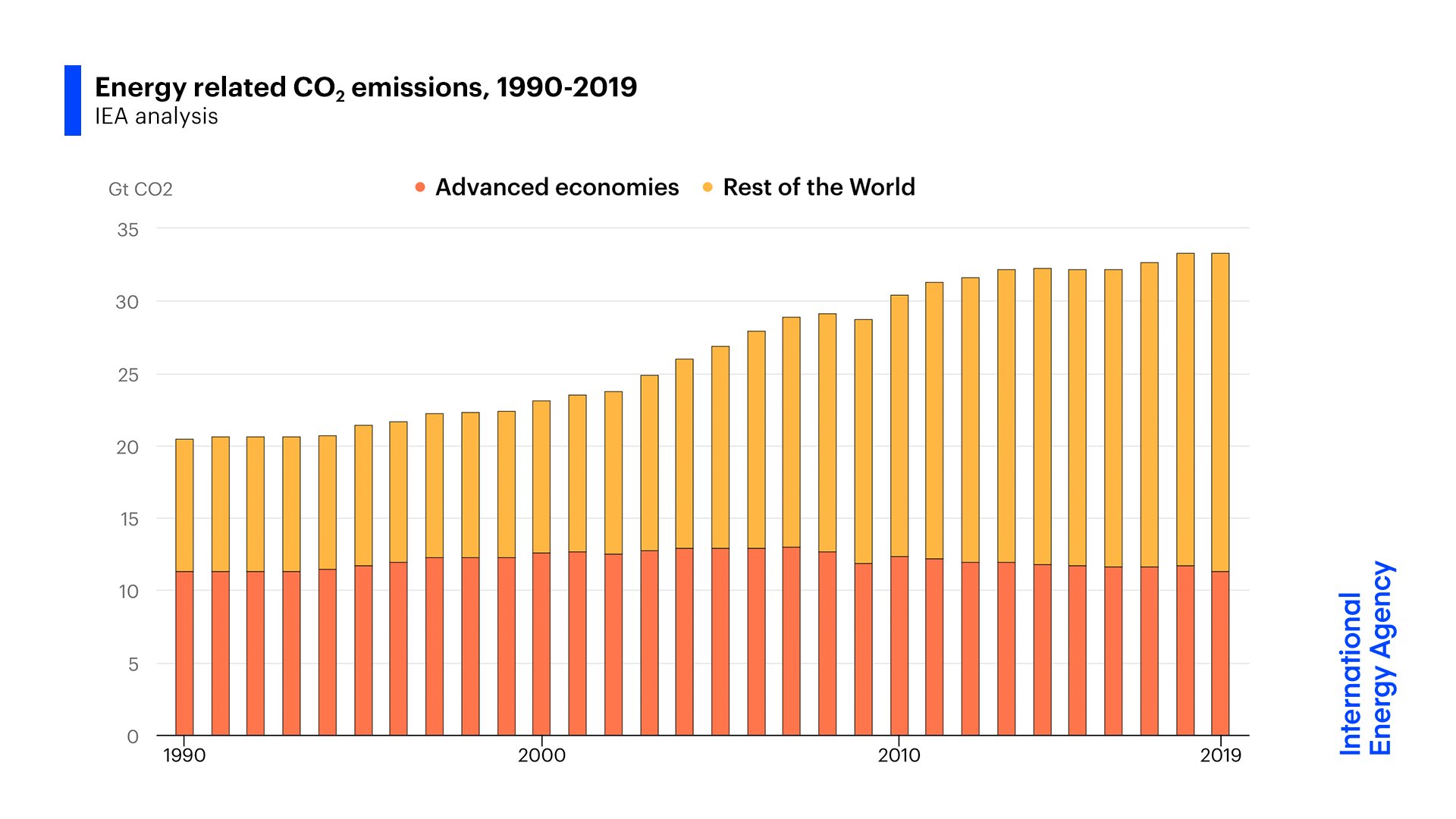
The IEA said CO2 emissions remained unchanged from their 2018 levels, although the global economy expanded by 2.9%. The data shows that emissions remained largely stable between 2013 and 2016 and then experienced two years of consecutive growth in 2017 and 2018.

According to the IEA, increased nuclear power generation in advanced economies, particularly in Japan and South Korea, avoided the release of over 50 megatonnes (Mt) of CO2 in 2019.
The agency said Japan’s energy-related CO2 emissions fell by 4.3% in 2019, in what was the fastest rate of decline since 2009, because of recent nuclear reactor unit restarts. The country’s nuclear output rose by 40%, which allowed Japan to reduce electricity generation from coal-, gas- and oil-fired power plants.
The agency’s data showed that renewable energy growth in advanced economies delivered 130 Mt of CO2 emission savings, with wind having the biggest share. Switching from coal-fired to gas-fired generation avoided 100 Mt of CO2 in advanced economies and was particularly strong in the US.
The IEA said that emissions outside advanced economies grew by about 400 Mt in 2019, with almost 80% of the rise originating in Asia, where coal accounted for 50% of energy use.
China’s emissions still hiked but were balanced by slower economic growth and higher output from low-carbon sources of electricity, including nuclear power.
The IEA said renewables continued to expand in China, while 2019 was also the first full year of operation for seven large-scale nuclear reactor units in the country.
Overall, the world’s CO2 emissions from coal use declined by almost 200 Mt, or 1.3%, compared to 2018 levels, offsetting increases in emissions from oil and natural gas, the IEA said.
Advanced economies saw their CO2 emissions decline by over 370 Mt, about 3.2% from 2018, with the power sector responsible for 85% of the drop.
Milder weather in many large economies coupled with weaker global economic growth compared to the preceding year also contributed to emission reduction in 2019, the IEA said.
*The IEA classifies as 'advanced economies' the following: Australia, Canada, Chile, European Union, Iceland, Israel, Japan, Korea, Mexico, Norway, New Zealand, Switzerland, Turkey, and United States.









